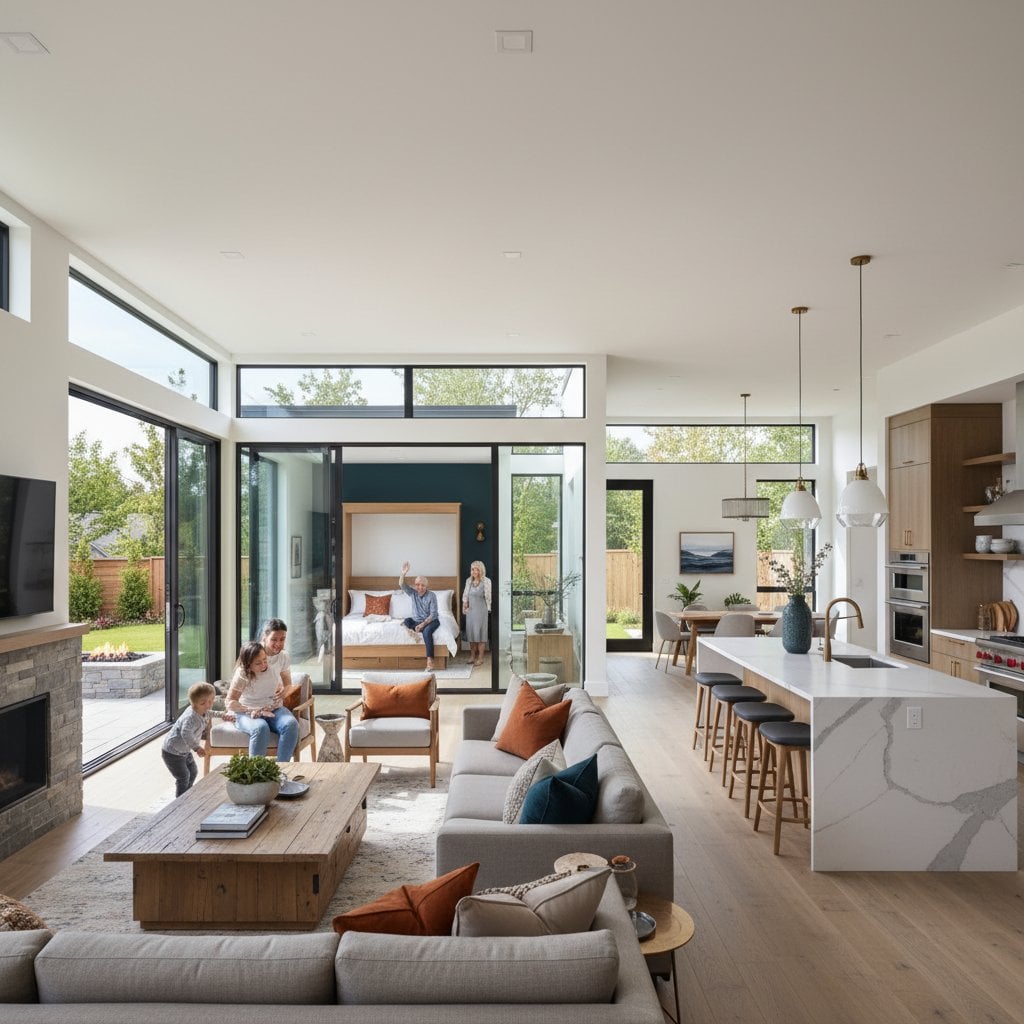Energy-Efficient Upgrades: Save Big in Fall 2025 Costs
Quick Cost Summary
Energy-efficient home upgrades typically range from $2,500 to $25,000, with most homeowners spending around $12,000 for a mid-level project. The price depends on the type of improvement, the size of your home, labor rates, and the materials you select. Simple changes like upgraded insulation or smart thermostats can cost under $5,000, while full system replacements such as high-efficiency HVAC or solar panels can cost over $20,000.
Major cost drivers include:
- Materials such as insulation, windows, and roofing
- Labor costs for installation and system upgrades
- Type of energy improvement (small upgrades vs. full replacements)
- Design complexity and home size
Key Insights for Homeowners
- Insulation upgrades deliver the fastest payback, often in less than three years.
- Window replacements are costly but improve comfort and resale value.
- HVAC system upgrades save money long term but require higher up-front costs.
- Solar panels have the highest initial cost but can reduce electricity bills for decades.
- Federal and local incentives can lower final costs significantly.
Cost by Upgrade Type
Different energy-efficient upgrades vary greatly in cost. Below are average price ranges homeowners should expect.
- Insulation Upgrades: $2,500 to $7,500 depending on material and square footage.
- High-Efficiency Windows: $8,000 to $18,000 for full-home replacement.
- HVAC Replacement: $6,000 to $15,000 for an energy-efficient system.
- Smart Thermostat and Controls: $200 to $900 including installation.
- Solar Panel Installation: $15,000 to $25,000 for a typical residential system.
- Roof Replacement with Cool Roofing Materials: $9,000 to $20,000.
These costs shift with home size, location, and contractor rates. Smaller projects often provide quicker returns, while larger projects deliver long-term savings and higher resale value.
Contractor Costs vs DIY Options
Contractor labor typically accounts for 30 to 50 percent of the total project cost. For example, installing new insulation for $6,000 may include $2,000 to $3,000 in labor. Window replacements also carry high labor percentages due to precision installation requirements.
DIY is realistic for smaller projects like smart thermostats, weatherstripping, or basic insulation in attics. Larger projects such as HVAC installation, solar panels, or full window replacements should always be handled by licensed professionals. Mistakes in these projects can lead to system inefficiency, code violations, or safety issues.
Additional Cost Factors
Several elements influence the final cost of energy-efficient upgrades:
- Permits and Inspections: Building permits cost between $200 and $1,500 depending on the project scope.
- Home Size: Larger homes require more material and labor.
- Material Quality: Higher-grade windows or insulation cost more but often provide better efficiency.
- Design Complexity: Older homes may require structural adjustments or electrical upgrades.
- Rebates and Incentives: Utility companies and local governments may reduce costs by 10 to 30 percent.
Ways to Save on Energy-Efficient Upgrades
Homeowners can lower upgrade costs with careful planning:
- Bundle Projects: Combine insulation and window replacement for lower labor costs.
- Use Rebates: Apply for local incentives or federal tax credits where available.
- Prioritize Quick Payback Projects: Start with insulation, air sealing, and smart thermostats.
- Shop Materials in Advance: Seasonal sales often reduce the cost of windows or roofing materials.
- Schedule in Off-Peak Seasons: Contractors may offer better rates in late fall or early winter.
Return on Investment (ROI)
Energy-efficient upgrades often pay for themselves through reduced utility bills and higher home value.
- Insulation: ROI of 60 to 80 percent with energy bill savings starting immediately.
- Windows: ROI of 55 to 70 percent, with improved comfort as a major benefit.
- HVAC: ROI of 50 to 65 percent, paired with consistent monthly savings.
- Solar Panels: ROI of 80 percent or more over long-term use, depending on electricity rates.
- Cool Roofing: ROI of 50 to 60 percent with reduced cooling costs.
These numbers also influence resale value. Buyers often prefer homes with energy-efficient systems already in place.
Cost Methodology
All cost figures are based on national averages, contractor quotes, and industry surveys. Regional variations exist, and local labor rates may shift totals by 15 to 25 percent. Material cost fluctuations also affect final numbers, especially for roofing and solar panels.
DIY vs Hiring a Pro
DIY is sensible for smaller tasks like sealing air leaks, installing weatherstripping, or upgrading to a smart thermostat. These improvements keep costs under $1,000 and require minimal tools.
Hiring a professional is smarter for projects involving electrical work, HVAC systems, window replacements, or solar installations. Professional work ensures code compliance, warranty coverage, and long-term performance. While professional installation costs more, it prevents costly repairs from mistakes.
FAQs
How much does an energy-efficient upgrade cost?
Most homeowners spend between $2,500 and $25,000 depending on project size and complexity.
What is the cheapest upgrade with the best return?
Insulation and air sealing usually deliver the fastest payback at the lowest cost.
Should I replace windows or upgrade insulation first?
Insulation typically provides faster savings, but windows add comfort and long-term efficiency.
Can I install solar panels myself?
Home solar panel installation is not recommended as it requires electrical expertise, permits, and inspections.
Do energy-efficient upgrades increase home value?
Yes, buyers often pay more for homes with lower utility costs and upgraded systems.
Maintaining Your Investment
Energy-efficient upgrades are not one-time fixes. Regular maintenance ensures your investment continues to save you money. Clean HVAC filters, inspect insulation for moisture, and check seals around windows and doors. Monitor your utility bills to spot changes in efficiency. If savings start to drop, schedule a professional inspection.
Investing in upgrades strategically, starting with insulation and moving to higher-cost systems as your budget allows, helps you manage expenses while reducing energy use. Over time, you will enjoy lower bills, better comfort, and stronger resale value.
Whether you plan to stay in your home long term or sell in the near future, energy-efficient improvements offer both immediate and lasting financial benefits. Careful planning, smart prioritization, and professional installation where needed make the upgrades worthwhile.




